Postcards from Kyoto - Nishiki Market, Masugata Arcade and the traditional sho-tengai
This is the third in my Postcards from Kyoto series.
The traditional center of life in a Japanese town is the sho-tengai (商店街), a street or collection of streets where all the local shops congregate. Often it is wholly or partially covered and made into a indoor shopping mall or arcade.
The most famous sho-tengai in Kyoto, and arguably in Japan, is Nishiki Ichiba (or Nishiki Shijo - the word for market, 市場, can be read either way) or Nishiki Market (錦市場), which proudly calls itself Kyoto's Kitchen. Although it's called a market, it is a sho-tengai really rather than a market in the European sense; it's a narrow, covered street lined with small stores.
The first place we headed to at Nishiki market was Fuka (麩嘉), a store that specializes in fu (麩), which is made from kneaded wheat gluten. Celiacs will need to avoid this store, but if you have ever had seitan, fresh or 'raw' fu (namafu, 生麩) is to seitan as a perfect, buttery croissant is to a stale roll.
This is a fu-manjuu or fu dumpling, made from fresh, soft fu filled with azuki an and wrapped in a bamboo leaf for freshness. It is stored in fresh water for maximum moisture. It's moist, soft, just sweet enough and delicious.
One reason why the Nishiki market has been a food production and sales center for centuries is the quality and quantity of the water there. Many stores still display this proudly in the form of little water features. This is the one at the Fuka store.
Moving on, we sampled some fried nerimono, or fish paste products - this is a satsuma age with green onion and ginger...
...and bite-sized onigiri (rice balls) from a rice merchant. Freshly made, they were still warm and so good. They are for sale primarily to convince people of the quality of their rice, but they are great snacks for hungry tourists too.
This store gets photographed all the time, because it's so colorful - it's Takakura, a tsukemono or pickle specialist. It's located near the western end of Nishiki Dori.
Tea, various snacks, semi-dried fish, seaweed, spices and condiments are all available. Here are some whole katsuobushi - this is what's shaved or grated to make the bonito flakes you may be familiar with.
Some spring vegetables, many of which are unavailable outside of Japan - tara no me, fuki no tou, kogomi, kanzashi...
Various spices and condiments...
Nishiki market is not just about food though. There are stores selling sake, kitchen wares, Chinese and Western medicines, and more. The main store of the famed Aritsugu metalworking company is here. I'm actually not such a big fan of Aritsugu knives (more on that in a later post) but I am a fan of their food cutters, which are expensive and beautiful. (Tip: the Aritsugu store does not take credit cards, but a smaller selection of the same products are sold at Takashimaya department store which is just a 10 minute walk away on Shijo Dori. Takashimaya does take credit cards and arguably has better service. Aritsugu products are available at other Takashimaya stores around the country too.)
And if you look up to the second floor above the stores, there are quite a few eat-in restaurants that you can go to for lunch. If traditional Japanese food is not your thing though - or if you've had your fill from the snacks and free samples on offer, there are plenty of cafes in the area to grab a more Western bite to eat. For some reason, Kyoto is renowned (in Japan anyway) for its buttery French toast. I have to say it's not bad at all.
At the eastern end of the Nishiki Dori is the small Nishiki Tenmanguu (錦天満宮) Shinto shrine.
Of interest here to some people may be the fact that they have Hello Kitty omamori (お守り)or amulets. Unlike similar ones sold at stores, these are real omamori, since when you purchase one a miko (shrine maiden) will infuse it with nen, or good power, for you. I know this may sound like superstitious nonsense to some people, but many Japanese believe in the power of omamori, at least partially. Quite a lot of people, young and old, go to Kyoto to collect goriyaku (ご利益) - various amulets and such from the numerous Shinto shrines and Buddhist temples in the city. Me? I'm not sure, but I figure it doesn't hurt.
Anyway, at Nishiki Tenmanguu you can get Hello Kitty omamori that will help you with your studies or your love life. Both kinds of omamori are very popular with schoolgirls. The love-luck omamori has a Hello Kitty holding a carp, or koi, which is also the word (though with different kanji) for love. (The fish koi is 鯉 and the love koi is 恋).
Masugata Arcade
Nishiki market is frankly quite touristy; in the afternoons it can be unbearably packed with slow-moving gawkers. To experience a more down-to-earth traditional covered sho-tengai without the crowds, go north a bit to the Demachi area. Demachi was the endpoint of the historic Saba Kaido (鯖街道 さばかいどう)or "Mackerel Road" leading to Kyoto, that supplied fish to the imperial capital. Today it's a residential neighborhood with just a handful of intrepid tourists wandering around. Masugata Arcade is a homey, no-frills covered sho-tengai, and is part of the outdoors Demachi sho-tengai. (The famous Demachi Futaba wagashi shop is in Demachi - see Sweet Destinations.)
At Masugata Arcade you will find all the stores to fulfil your everyday needs: pharmacies, konbini, greengrocers, butchers and fishmongers; stores selling socks and towels, yarn and craft supplies, candy and drinks, and more. This may seem like a nothing display to you, but it makes me feel happy and rather nostalgic. This is how most stores used to be, when I was growing up - with all kinds of stuff displayed outside in colorful piles.
There are many stores selling obanzai (おばんざい), which is Kyoto dialect for what is called osouzai (お惣菜) elsewhere - ready-to-take-home-and-eat dishes, often made in the back of the store.
This little shop sells various kinds of karaage, to eat right there or take home.
This store sells not only sells fresh noodles, it sells ready-to-use bags of the dipping sauce or soup (mentsuyu) to go with it.
You can find fresh fish and meat too. Here's Thomas of Bento&co, who lives in the neighborhood and showed us around Masugata Arcade, shopping for some jidori or freerange chicken. A Frenchman who settled in Kyoto several years ago (and married a local girl), he loves the freshness and prices of the food he can buy here.
Fruits and vegetables are fresh, cheap and plentiful. As someone who grew up in the Kanto (Tokyo metropolitan) region, I was taken by these roots-on spinach bundles. In the Kanto area, the roots are usually chopped off, but I can imagine the spinach stays fresher this way.
This being late March, the greengrocers were filled with citrus fruit, like these kumquats (金柑 kinkan). I couldn't resist buying some to eat in our hotel room, and the storekeeper took 50 yen off the price because "they're a bit too ripe".
Practical details
Nishiki Market is just one block north of Shijo Dori, in the center of town. You can reach it via any number of buses. The nearest metro station is Shijo on the Karasuma line. Official site, which has a page in English.
Masugata Arcade is to the north of the center of town, within the Demachi sho-tengai. It's a short walk from Demachiyanagi station (出町柳駅), which is on the Keihan and Eizen lines. Official web site in Japanese only.
Please use my Kyoto destinations map for reference.
Don't really expect to be able to use much English in either place by the way, except perhaps in some stores in Nishiki Market. But no worries, even at Masugata/Demachi - people in Kyoto are very used to foreign visitors (and Demachi has quite a few foreign residents, due to the presence of Kyoto University, Doshisha University and other schools in the area).
The future of sho-tengai in Japan
Nishiki Market and Masugata Arcade/Demachi Sho-tengai are examples of two thriving sho-tengai (in the case of Nishiki a rather high-end, specialized one), helped in no small part by the fact that Kyoto is a tourist mecca. But all over Japan, the sho-tengai seems to be slowly dying, as supermarkets, mega-marts, suburban shopping malls and online shopping, not to mention the recession, take customers away from the traditional town centers. There have been concerted efforts to revitalize town centers and sho-tengai around the country, with mixed results. Will sho-tengai survive, or are they are relic of the past? Only time will tell.
Whether it's in Kyoto or elsewhere, if you encounter a sho-tengai in Japan, I encourage you to visit it. For the next time you go, it may not be there anymore.
(Special thanks to Thomas and Erico!)
Other Postcard from Kyoto so far
If you enjoyed this article, please consider becoming my patron via Patreon. ^_^



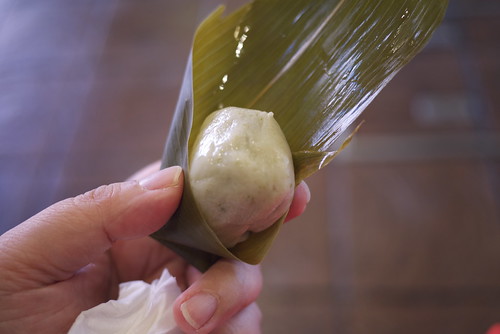
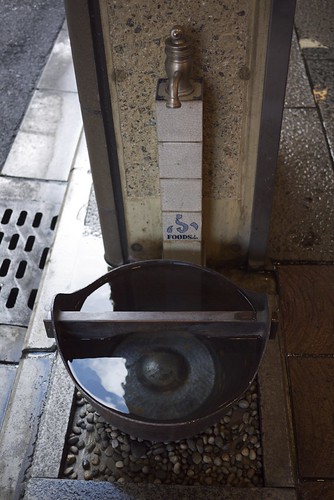
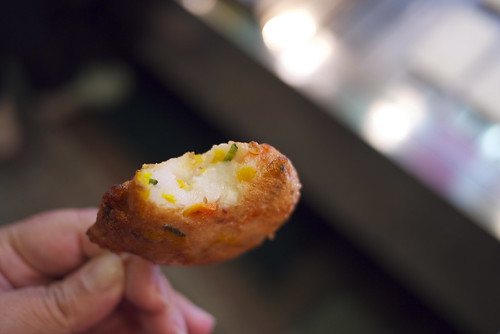
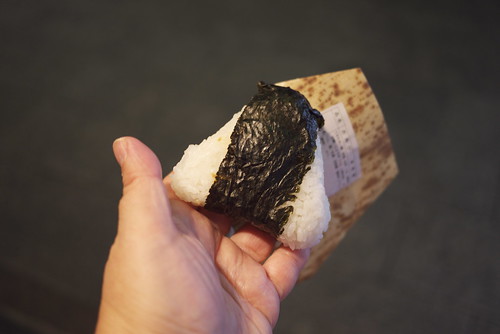


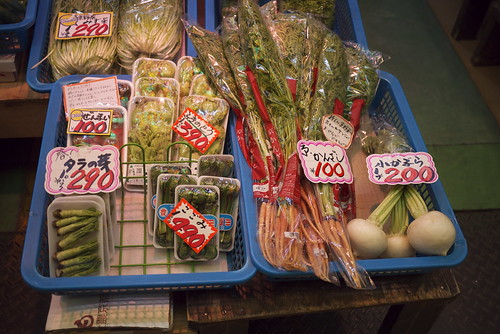
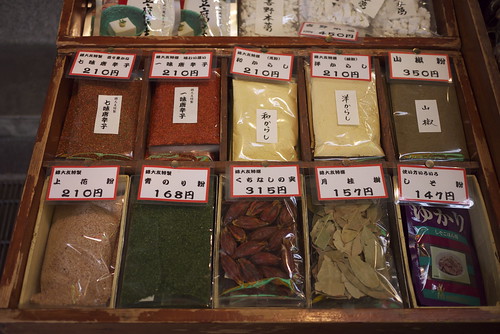



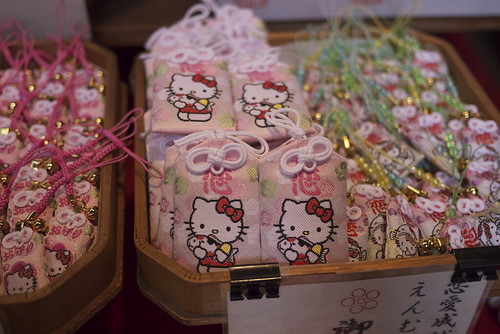
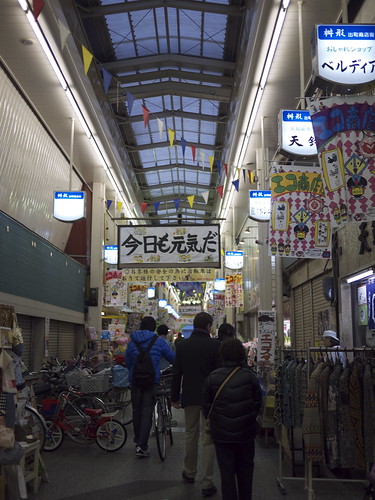

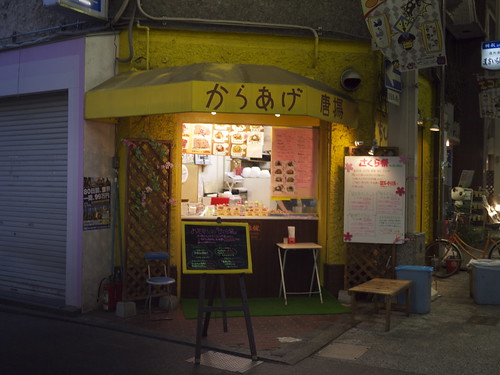


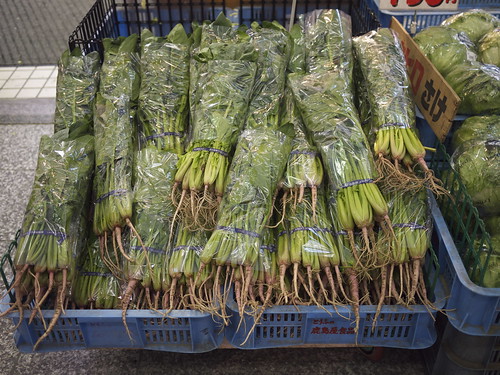

 Welcome to Just Hungry, where we serve authentic Japanese recipes and more! I'm
Welcome to Just Hungry, where we serve authentic Japanese recipes and more! I'm 














Comments
Kim
21 April, 2010 - 12:46
Permalink
Re: Postcards from Kyoto - Nishiki Market, Masugata Arcade ...
"This store gets photographed all the time..." I have that exact same picture :D. I visited Nishiki too early. When I arrived at 10 AM hardly anything was open, so I visited that shrine. At around 11 AM stores started opening. I totally missed out on the food though, bummer.
I really liked all those sho-tengai in Japan. I didn't know their popularity was decreasing, that's a bit sad.
Mirona
21 April, 2010 - 16:34
Permalink
Re: Postcards from Kyoto - Nishiki Market, Masugata Arcade ...
I used to go, once or twice a week, at a sho-tengai in downtown Kobe, I loved it so much that I would rarely go grocery shopping at the supermarkets much more closer to my apartment. Although it seemed intimidating for a foreigner at first, the prices and the its homey appeal made me comeback every time until I was no longer an unusual sight but somebody familiar to the people selling their stuff there. I would walk past the colorful displays thinking about what new taste/vegetable/fruit should I try next, so it was a space for exciting discoveries for me: mikan, sweet potatoes, fresh tofu made by a nice obaasan, kumquats etc. Even though I'm not Japanese, I think I can understand a bit the nostalgia you feel when you shop in a sho-tengai :)
Van
21 April, 2010 - 19:02
Permalink
Re: Postcards from Kyoto - Nishiki Market, Masugata Arcade ...
I adore your post cards. I love the pictures that show humans are fundamentally the same despite our wonderful and colorful cultural differences. In this case, we see we're all powerless to resist our primal search for good food. I hope to see some of these gorgeous markets in person one day. I'll pause, gawk, and take 100 photos like a true annoying tourist.
Nigel Fogden
26 April, 2010 - 23:39
Permalink
Re: Postcards from Kyoto - Nishiki Market, Masugata Arcade ...
Beautiful photos. They both make me hungry and remind me that I haven't been to Kyoto for a long time.
They also make me a little sad because they remind me that the sho-tengai "zone" in my own little town (Shibata-machi, way up in Miyagi) is fading away. It's a tough problem.
Most people love these areas in theory, but in practice shopping in them can be tough. Just about all of the stores are operated by people in their sixties and there's a disconnect between what that generation values and what younger people are willing to spend their money on. In a way the diminishing popularity of sho-tengai is emblematic of the demographic crisis that Japan is heading towards.
shorty
27 April, 2010 - 05:48
Permalink
Re: Postcards from Kyoto - Nishiki Market, Masugata Arcade ...
OHHH someday I will get to go to Japan! I grew up with a best friend who was Japanese and I just fell in love with everything Japanese! Her parents moved back so if I ever go I can stay with them which would be so much fun! Thank you for sharing all your pictures, it brings back memories for me even though I have not been! They had so much Japanese in there home it felt as if I was able to go with them!
Shorty
Brodie Davis
27 April, 2010 - 11:49
Permalink
Re: Postcards from Kyoto - Nishiki Market, Masugata Arcade ...
Thank you for putting this up. I love the sho-tengai when I visit japan, but the one I am most familar with is the Asagaya one in Suganami-ko, but I have visted the one in Nakano as well. My wife thought I was a bit strange when I would visit and buy stuff from the shops there in preference to the supermarkets nearer to the house, but you need to shop at them, or they will disappear.
CB
13 May, 2010 - 02:29
Permalink
Re: Postcards from Kyoto - Nishiki Market, Masugata Arcade ...
Thanks so much - these are so much fun to read!
Maki (and others) - how difficult do you think it would be to travel in Japan if you don't speak Japanese at all? Would it be overwhelming to try and navigate the streets or try to buy things (like food) without really knowing where you're going or what you want? I love to see these pictures, but all of the choices seem so intimidating...
I would really like to visit some time, but I don't want to be insulting by visiting Japan and expecting people to speak English to me!
maki
13 May, 2010 - 21:25
Permalink
Re: Postcards from Kyoto - Nishiki Market, Masugata Arcade ...
Hi CB, while it's kind of hard for me to un-learn Japanese and try to experience it as someone might who doesn't know the language, I would say it's not as hard as you may think; public transportation has signs in English, you can get a hold of English maps and brochures, and so on. And also don't worry about trying to get people to speak English to you - Japanese people don't expect people to know Japanese (and are pleasantly surprised when they do, as a general rule...which sort of upsets some long-term residents who pride themselves in their Japanese fluency, but that's another story...) The reaction in some cases just might be for that person to run away shaking their heads, or ask for help from someone else, but in most cases, at least in urban areas, you are very likely to get some kind of help even if the person you are addressing is not comfortable with English.
Now, there are some issues with navigating around in Japan, that have nothing to do with the language - namely that in some places (notably Tokyo, but other places too) the streets (most of which are unlabeled in any language) are impossible to get around without a map and/or GPS. (This is true for Japanese people and long term residents, not just visitors - most newer cellphones in use in Japan have navigation on them in some form.) I will write this up in a post eventually, but I highly recommend having some sort of GPS or other navigation system (e.g. cellphone network based, though that can get expensive) with you, or at least good directions or maps to your destination. I used the Map on my iPhone constantly.
CB
14 May, 2010 - 02:42
Permalink
Re: Postcards from Kyoto - Nishiki Market, Masugata Arcade ...
Thank you so much!! :-D
Manuel W.
1 June, 2010 - 08:44
Permalink
Re: Postcards from Kyoto - Nishiki Market, Masugata Arcade ...
Thank you for this. I just got back from Kyoto and this made me appreciate this special street even more.